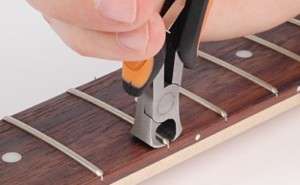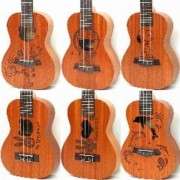What is the structure of a piano?
Contents
If you are a beginner pianist, then it will be useful for you to learn a little more about your instrument than those who have nothing to do with the piano know. Now here we will talk about how the piano works and what happens when we press the keys. Having received this knowledge, you may not yet be able to tune the piano yourself, but at least you will have an idea of how to fix minor problems with the piano and continue practicing until the tuner arrives.
What do we usually see on the outside when we look at a piano? As a rule, this is a kind of “black box” with teeth-keys and foot-pedals, the main secret of which is hidden inside. What’s inside this “black box”? Here I would like to pause for a moment and quote the lines of a famous poem for children by Osip Mandelstam:
In every piano and grand piano, such a “town” is hidden inside a mysterious “black box”. This is what we see when we open the piano lid:
Now it’s clear where the sounds come from: they are born at the moment when the hammers strike the strings. Let’s take a closer look at the external and internal structure of the piano. Each piano consists of .
Essentially, the most massive part of the piano is its corps, hiding everything that happens inside and protecting all the mechanisms of the instrument from dust, water, accidental breakdowns, penetration of domestic cats and other disgrace. In addition, the case plays an important role as a load-bearing base, which prevents the 200-kilogram structure from falling to the floor (about how much an average piano weighs).
Acoustic block a piano or grand piano consists of those parts that are responsible for the instrument producing musical sounds. Here we include the strings (that’s what it sounds), the cast-iron frame (on which the strings are attached), as well as the soundboard (this is a large canvas glued together from pine planks that reflects the weak sound of the string, amplifying and growing it to concert strength).
Finally, Mechanics A piano is a whole system of mechanisms and levers that are needed so that the keys struck by the pianist respond with the necessary sounds, and so that at the right moment the sound, at the request of the playing musician, is immediately interrupted. Here we must name the keys themselves, hammers, dampers and other parts of the instrument, this also includes pedals.
How does it all work?
The sounds come from hammers hitting the strings. On the piano keyboard everything 88 keys (52 of them are white, and 36 are black). Some older pianos only have 85 keys. This means that a total of 88 notes can be played on a piano; to do this, there must be 88 hammers inside the instrument that will strike the strings. But it turns out that there are much more strings that the hammers hit – there are 220 of them. Why is this so? The fact is that each key has from 1 to 3 strings from the inside.
For low thunderous sounds, one or two strings are enough, since they are long and thick (even have a copper winding). High sounds are born thanks to short and thin strings. As a rule, their volume is not too strong, so it is enhanced by adding two more exactly the same ones. So it turns out that one hammer strikes not one string, but three at once, tuned in unison (that is, the same sound). A group of three strings that produce the same sound together is called in chorus strings
All strings are mounted on a special frame, which is cast from cast iron. It is very strong, as it must withstand high string tension. The screws with which the required string tension is achieved and fixed are called how many (or whirbels). There are as many virbels inside the piano as there are strings – 220, they are located in the upper part in large groups and together form vyrbelbank (virbel bank). The pegs are screwed not into the frame itself, but into a powerful wooden beam, which is fixed behind it.
Can I tune the piano myself?
I don’t recommend it unless you are a professional tuner, but you can still fix some things. When tuning a piano, each of the pegs is tightened with a special key so that the string sounds at the desired pitch. What should you do if any of the strings are weakened and one of their choirs gives out dirt? In general, you need to invite an adjuster if you do not do this regularly. But before he arrives, this problem can be resolved independently by slightly tightening the necessary string.
To do this, you first need to determine which of the choir strings is out of tune – this is easy to do, you need to look at which choir the hammer hits, then listen to each of the three strings separately in turn. After this, you just need to turn the peg of this string slightly clockwise, making sure that the string acquires the same tuning as the “healthy” strings.
Where can I get a piano tuning key?
How and with what to tune a piano if there is no special key? Under no circumstances try to turn the pegs with pliers: firstly, it is not effective, and secondly, you may get hurt. In order to tighten the string, you can use ordinary hexagons – such a tool is in the arsenal of any car owner:
If you don’t have hexagons at home, I recommend buying them – they are quite inexpensive (within 100 rubles) and are usually sold in sets. From the set we select a hexagon with a diameter of XNUMX and the corresponding head; with the resulting tool you can easily adjust the position of any of the piano pegs.
As you can see, everything is quite simple. Only, I warn you that with this method you can solve the problem for a while. However, you should not get carried away with “tightening the pegs” and refuse the services of a tuner: firstly, if you get carried away, you can spoil the overall tuning, and secondly, this is far from the only necessary operation for your instrument.
What to do if the string breaks?
Sometimes the strings on a piano burst (or break, in general, break off). What to do in such a situation before the adjuster arrives? Knowing the structure of the piano, you can remove the damaged string (remove it from the “hook” at the bottom and from the “peg” at the top). But that is not all…. The fact is that when a treble string breaks, one of the neighboring ones (on the left or right) loses its tuning along with it (“relaxes”). It will also have to be removed, or fixed at the bottom on a “hook”, making a knot, and then adjusting it in a familiar way to the desired height.
What happens when you press the piano keys?
Now let’s understand how the mechanics of a piano work. Here is a diagram of the operating principle of piano mechanics:
Here you see that the key itself is not connected in any way to the source of sound, that is, to the string, but only serves as a kind of lever that activates internal mechanisms. As a result of the impact of the key (the part that is visible in the figure is hidden when viewed from the outside), special mechanisms transfer the impact energy to the hammer, and it strikes the string.
Simultaneously with the hammer, the damper moves (a muffler pad that lies on the string), it comes off the string so as not to interfere with its free vibrations. The hammer also instantly bounces back after being hit. As long as a key is pressed on the keyboard, the strings continue to vibrate; as soon as the key is released, the damper will fall onto the strings, dampening their vibrations, and the sound will stop.
Why do pianos need pedals?
Usually a piano or grand piano has two pedals, sometimes three. Pedals are needed to diversify and colorize the sound. Right pedal removes all the dampers from the strings at once, as a result of which the sound does not disappear after releasing the key. With its help, we can achieve the sound of more sounds at the same time than we could play with just our fingers.
There is a common belief among inexperienced people that if you press the damper pedal, the sound of the piano will become louder. To some extent this is indeed true. Musicians tend to evaluate not so much volume as the enrichment of timbre. When a string is acted upon with open dampers, this string begins to respond to many others that are related to it according to acoustic-physical laws. As a result, the sound is saturated with overtones, making it fuller, richer and more flighty.
Left pedal also used to create a special kind of colorful sound. By its action it muffles the sound. On upright pianos and grand pianos, the left pedal operates in a variety of ways. For example, on a piano, when the left pedal is pressed (or, more correctly, taken) the hammers move closer to the strings, as a result of which the force of their impact decreases and the volume decreases accordingly. On a piano, the left pedal, using special mechanisms, shifts the entire mechanics relative to the strings in such a way that instead of three strings, the hammer hits only one, and this creates an amazing effect of distance or depth of sound.
The piano also has third pedal, which is located between the right pedal and the left one. The functions of this pedal may vary. In one case, this is necessary for holding individual bass sounds, in another – which greatly reduces the sonority of the instrument (for example, for night practice), in the third case, the middle pedal connects some additional function. For example, he lowers a bar with metal plates between the hammers and strings, and thus changes the usual timbre of the piano to some “exotic” coloring.
Let’s sum it up…
We learned about the structure of a piano and got an idea of how a piano is tuned, and learned how to eliminate minor defects in the operation of the instrument before the tuner arrives. I also suggest you watch a video on the topic of the article – you will be able to spy on the production of musical instruments at the Yamaha piano factory.
If you have any questions, leave them in the comments. To send the article to your friends. Use the social media buttons at the bottom of this page.




